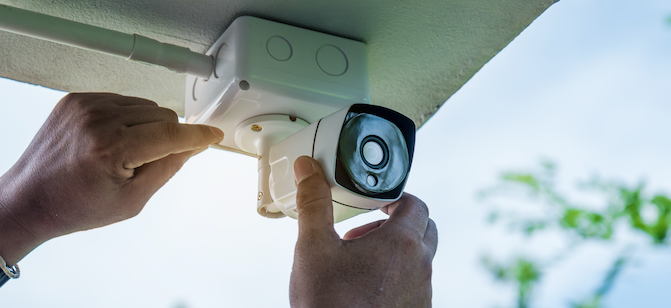
Securing Home: Optimal Surveillance Camera Setup
In an era where security is paramount, setting up a home surveillance camera system is a proactive step towards safeguarding your property. Let’s explore the key components and considerations for an optimal home surveillance camera setup, ensuring peace of mind and a secure living environment.
Strategic Placement for Comprehensive Coverage
The effectiveness of a home surveillance camera setup begins with strategic placement. Identify key entry points, vulnerable areas, and valuable assets around your property. Placing cameras at these strategic locations ensures comprehensive coverage, leaving no blind spots and providing a clear view of potential security threats.
Choosing the Right Camera Types
Selecting the appropriate camera types is crucial for a successful surveillance setup. Different areas may require different cameras – outdoor cameras for exterior monitoring, indoor cameras for sensitive spaces, and specialized cameras such as pan-tilt-zoom (PTZ) cameras for wide coverage. Choosing cameras with features like night vision and motion detection enhances the system’s capabilities.
Home Surveillance Camera Setup – Explore optimal solutions for securing your home with a surveillance camera setup at coexist-art.com. Discover the latest technologies and tips for a robust security system.
High-Resolution Cameras for Clear Identification
The clarity of surveillance footage is paramount for identification purposes. Opt for high-resolution cameras that capture crisp and detailed images. This is particularly important when attempting to identify individuals or read license plates. Modern surveillance cameras offer resolutions ranging from 1080p to 4K, ensuring a level of detail that is essential for security.
Remote Monitoring and Alerts
Incorporate remote monitoring capabilities into your surveillance camera setup. Many modern systems allow homeowners to view live feeds and receive alerts remotely through mobile apps. This feature provides real-time information about the security status of your home, enabling prompt responses to potential threats, even when you’re away.
Integration with Smart Home Technology
For a seamlessly integrated security system, consider cameras that work with smart home technology. Integration with virtual assistants like Amazon Alexa or Google Assistant allows voice control, while compatibility with other smart devices enables automation. For instance, cameras can trigger lights or alarms in response to detected motion.
Secure Storage and Data Protection
Choosing the right storage solution for surveillance footage is essential. Opt for cameras that support cloud storage or have built-in storage options like SD cards or Network Attached Storage (NAS) devices. Ensuring data protection and secure storage is crucial for preserving the integrity of surveillance footage.
Regular Maintenance for Optimal Performance
A well-maintained surveillance camera system ensures optimal performance over time. Regularly check camera lenses for dirt or debris, clean them as needed, and ensure that all cameras have an unobstructed view. Regular maintenance includes checking for firmware updates to ensure that the system benefits from the latest security features.
User-Friendly Setup and Operation
Ease of setup and operation are vital considerations for a home surveillance camera system. Choose a system that is user-friendly, with intuitive interfaces for both the initial setup and day-to-day operation. This ensures that homeowners can efficiently manage and maintain their security systems without technical challenges.
Legal Considerations and Privacy Compliance
Before setting up a surveillance camera system, it’s crucial to be aware of legal considerations and privacy compliance. Understand the laws regarding surveillance in your region, and ensure that your system complies with privacy regulations. Informing neighbors about the presence of cameras and respecting their privacy is an essential aspect of responsible surveillance.
Continuous Monitoring and System Upgrades
A home surveillance camera setup is not a one-time investment; it’s an ongoing commitment to security. Continuously monitor system performance, address any issues promptly, and consider periodic upgrades to keep pace with advancements in technology. Regularly reassess your security needs to ensure that your surveillance system remains effective and up-to-date.
Investing in Peace of Mind
In conclusion, a well-thought-out home surveillance camera setup is an investment in peace of mind and the security of your property. By strategically placing cameras, choosing the right equipment, and staying vigilant with maintenance, homeowners can create a robust security system. Explore the possibilities, implement the best practices, and enjoy the confidence that comes with a secure home environment.

